Istanbul’s daughter, Izmir’s sister-Thessaloniki
Thessaloniki, in the words of the famous Greek novelist Despina Pandazis, is the daughter of Istanbul and the sister of Izmir. Thessaloniki, the streets smelling of the sea, are lively with the young and old, families with children and lovers. The University of Thessaloniki also keeps the city dynamic and lively. The city with thousands of years of history should be like this anyway.
Thessaloniki was founded in 315 BC by the Macedonian King Kassandros. One of the oldest daughters in history, named Thessaloniki, the daughter of King Philip of Macedonia. King Philip extended his power in Macedonia to all of Greece. Later, his son, Alexander the Great, conquered far more distant lands that extended the kingdom to the borders of the known world. Thessaloniki experienced its golden period after it came under Ottoman rule in 1430. Thessaloniki, the largest city of the Ottoman Empire in the Balkans, became a center of science with its intellectuals after that period. The multicultural texture of Thessaloniki, which was a shelter for Sephardic Jews expelled from Spain in the 15th century, became more colorful. Until the Jews were taken to concentration camps by the Nazis. This event also brought an end to the 400-year social and economic influence of the Jews in Thessaloniki. Almost all innovations in the last period of the Ottoman Empire emerged primarily in Thessaloniki. Thessaloniki, the city where the Young Turk movement was born at the end of the 19th century, when the most controversial period of our history was experienced, was the most important base of the movement until the collapse of the Ottoman Empire. After the migrations that started in 1912, the Greek population exceeded the Jewish and Muslim Turks. Thessaloniki became part of modern Greece in 1913, but in 1917 it was in a bad state with a homeless population of 70,000. In addition to this situation, when the refugees from Asia were added as a result of the Treaty of Lausanne with Turkey, a social revolution occurred and Rembetika music emerged. The most creative musicians of Greece today, such as Dionysious Savopoulos, Stellios Kazantzides and Nikos Papazoglou, are all from Thessaloniki.
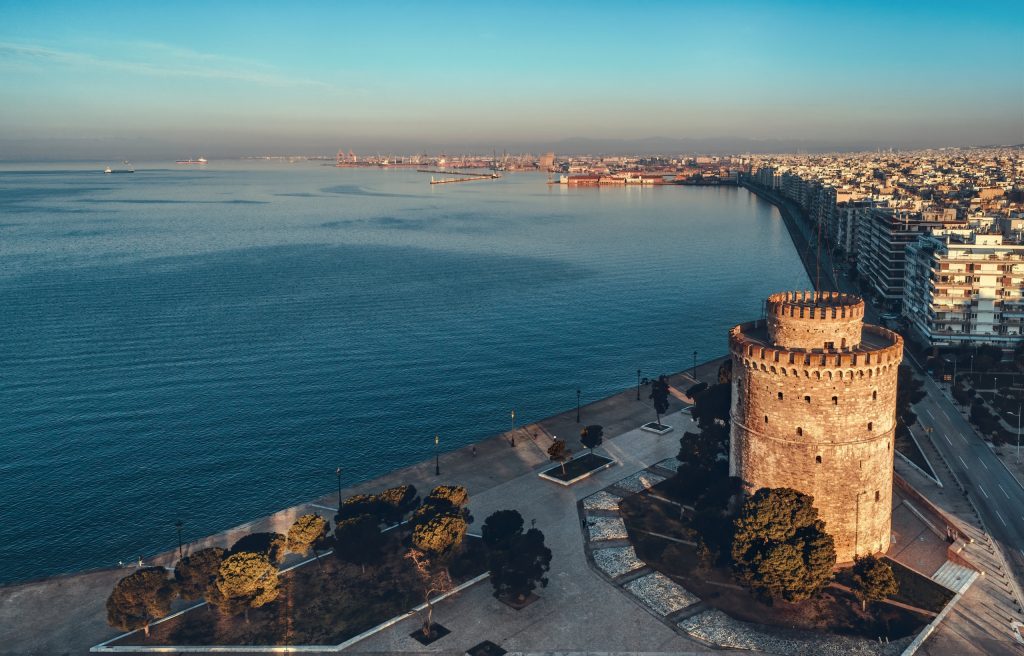
Thessaloniki is calmer in summer than in spring, because most of the people go on vacation to the Halkidiki Peninsula, which is 1.5 hours away from Thessaloniki. Also, don’t worry that the city is quiet during the day, when the sun goes down, you’ll see that the population doubles. You do not need to use public transport, you can visit Thessaloniki on foot. If you are going to use public transport, single-use tickets are 0.80 Euros for adults and 0.60 Euros for students. Tickets valid for 24 hours are 4 Euros. If you are going to buy a ticket, do not forget to validate your ticket from the ticket machines while getting on the bus.
Thessaloniki Attractions
Established on the shore of the Thermaikos Gulf, the city consists of two parts, old and new. Most of the sights and famous temples of Thessaloniki are located in the old town. The upper quarters of Thessaloniki, on the other hand, reflect Turkish traces with their historical houses. On the shore of the Aegean Sea, next to the bay, the White Tower is the symbol of the city today. Surrounded by lush parks and gardens, the tower is the ideal spot to start touring the city. From here, you can walk along the street that stretches along the coast, and when you get tired you can relax in one of the restaurants and cafes.
The White Tower
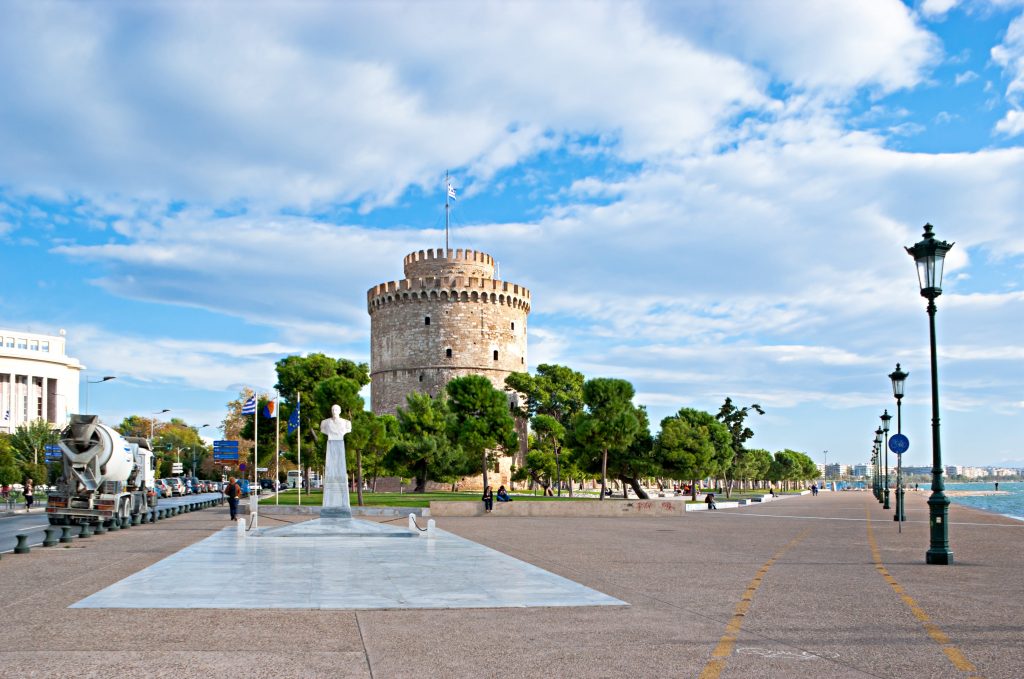
The White Tower, the symbol of Thessaloniki, is a magnificent structure built during the reign of Suleiman the Magnificent and located on the seaside of the city as a historical tower and museum today. The tower, which was used as a garrison and prison by the Ottomans, was baptized and painted white after Thessaloniki was captured by the Greeks as a result of the Balkan Wars in 1912. Although it started to be known as the White Tower after that day, Evliya Çelebi stated that the Kale-i Esed or Kalamarya Tower by the sea had 40 houses, 3 cisterns, and wheat warehouses for the tower, which returned to its old color in time, and that its cannons could only be delivered in Çanakkale and Rhodes. writes that it can be compared with those The surroundings of this tower, which Evliya describes, do not exist today, so much so that the castle walls were demolished in 1869, since a quay was built on the beach. Today, the tower is located in a lush park. You can enjoy this beautiful city from the sea by taking a short tour of Thessaloniki with boats departing in front of the tower, which is flooded by visitors especially at sunset. The tower can be visited between 08:00 and 20:00, 7 days a week. It is closed to visitors on 1 January, 25 March, 1 May, 25 and 25 December. White Tower entrance fee is 4€, student ticket is 2€. The White Tower can be visited free of charge on 6 March, 18 April, 18 May, 28 October and the last weekend of September.
Aristotle Square
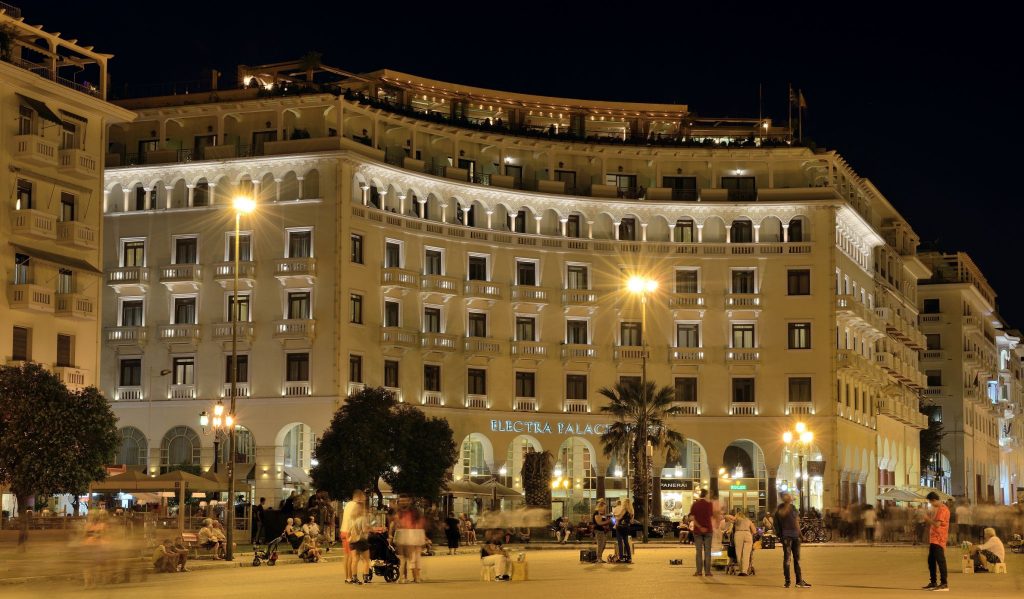
Aristotle Square (Aristotle Square), the main square where the heart of the city beats, is located by the sea. Aristotle Square, which is also one of the most famous places in all of Greece, is the starting point of many of the actions in the country with an extremely active political life. Aristotle also hosts many cultural events such as festivals and Christmas celebrations throughout the year. It is an important tourist area for Thessaloniki and is also very popular with its many cafes and bars around it. The nearby Modiano Market is one of the most colorful and lively places you should see in the city.
Rotonda
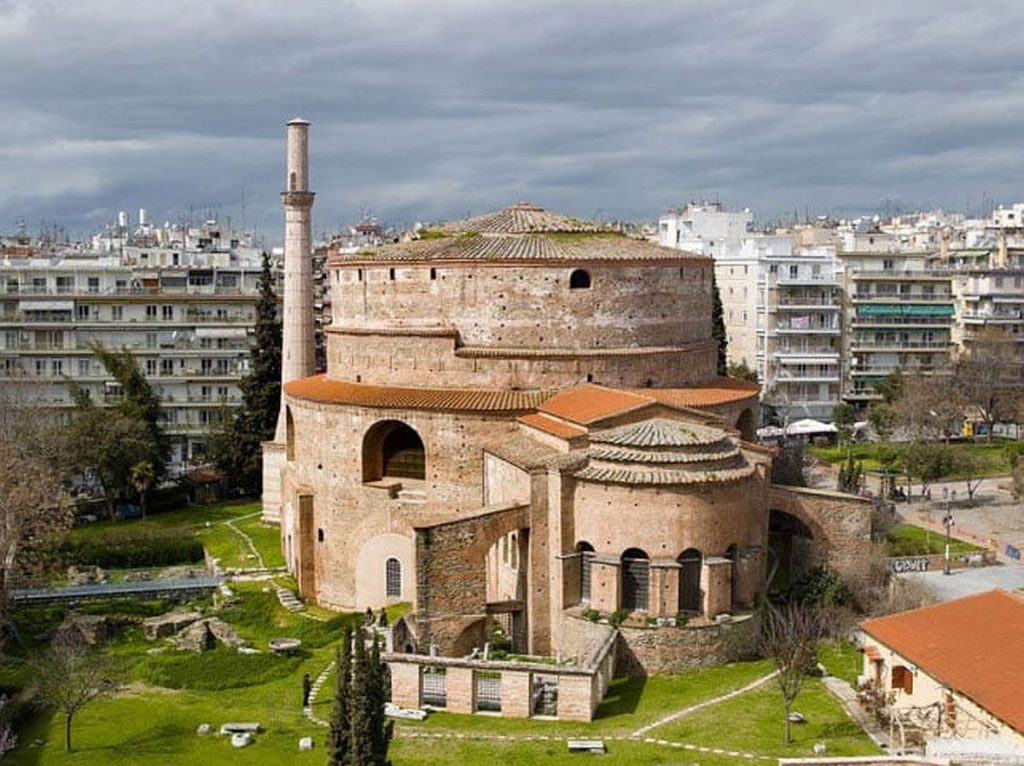
Rotonda, one of the oldest and most ostentatious buildings in Thessaloniki, takes its name from its circular shape. Rotonda, which is a round structure, has an inner diameter of 24.5 meters and a length of 29.8 meters. There are two common ideas as to why the Rotonda was built around 300 AD. According to the first idea, it was built to be the tomb of the famous ruler of Rome, Galerious, but he died and was buried far from Thessaloniki. According to the second, more common idea, the building was built to serve religious belief and was dedicated to Zeus. Converted into a church during the Theodosius era, Rotonda is decorated with brilliant artwork and high-quality mosaics. These mosaics are also the oldest wall mosaics of the east and the most important works of art in Thessaloniki. Rotonda can be visited between 08.00-15.30, 6 days a week, except Tuesdays. It is closed to visitors on 1 January, 25 March, 1 May, 25 and 25 December. Rotonda entrance fee is 2€, student ticket is 1€. Rotonda can be visited free of charge on the last weekend of 6 March, 18 April, 18 May, 28 October and September.
Allatini Mansion
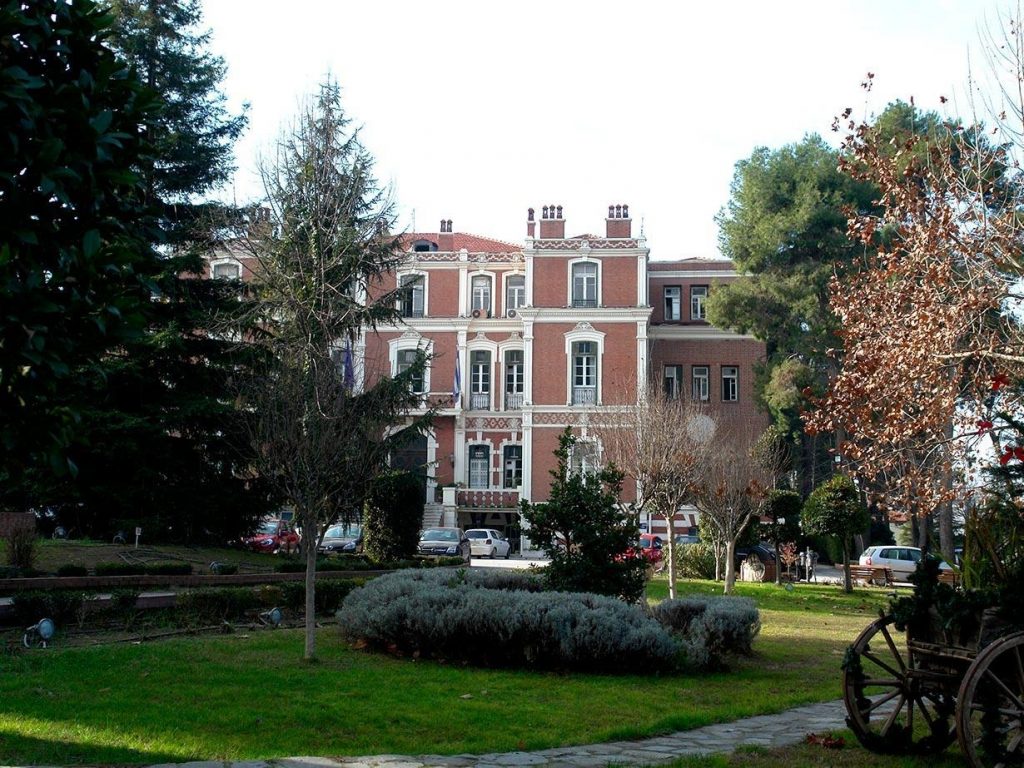
Allatini Mansion is a very important building for Ottoman history, although it is not seen much in Thessaloniki. Sultan Abdulhamid II, who was dethroned and sent to exile in Thessaloniki after the 31 March Incident, stayed in this mansion between 1909-1912. 2. Abdulhamit and his family lived in the mansion under difficult conditions. In 1912, when the Greek forces approached Thessaloniki, Abdulhamid II wanted to be sent back to Istanbul hastily. The Sultan strongly opposed this request and said, ‘Thessaloniki means the key to Istanbul. Where is our army, where are our soldiers? Don’t look at me as 70 years old. Although he said, ‘Give me a rifle, I will defend Thessaloniki until my last breath’, he returned to Istanbul, albeit by force. Then, Tahsin Pasha, who was in charge of protecting Thessaloniki, surrendered Thessaloniki with his army of 40 thousand people without firing a single bullet. He later became a Greek citizen. Allatini Mansion was built in 1888 by Italian architect Vitaliano Pozelli. As a university in 1926, II. It was used as a hospital in World War II. Today, it serves as the Macedonian Regional Governor.
Kamara Square
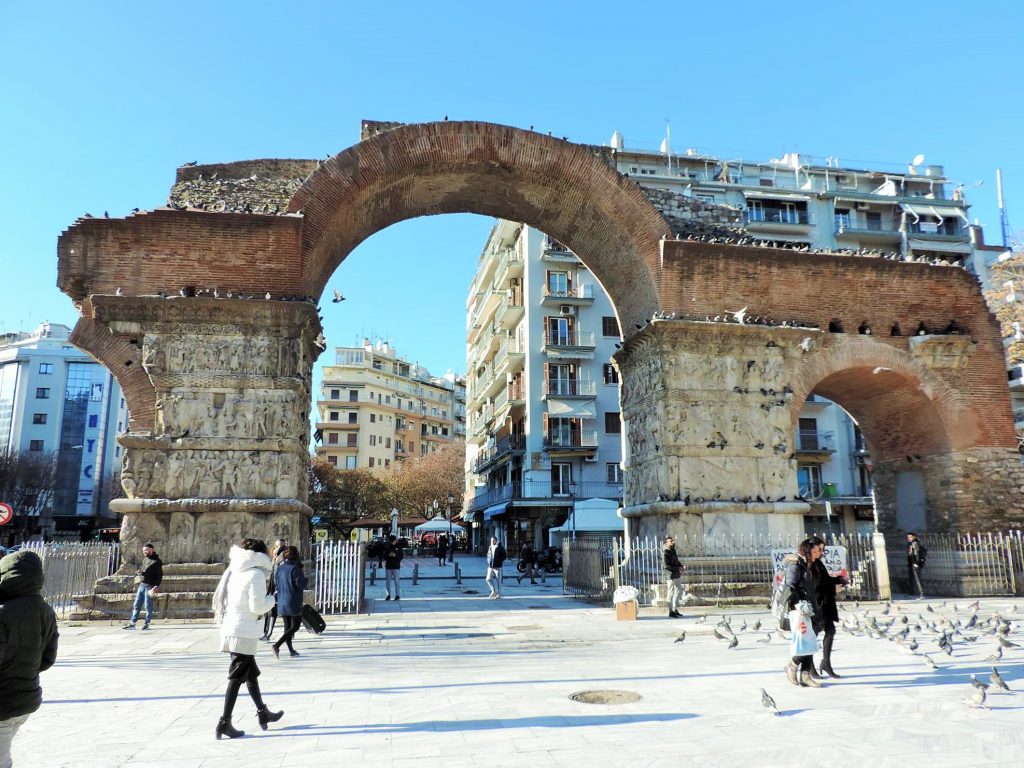
Located in Kamara Square, which is the meeting point of many people in Thessaloniki, the Arch of Galerius, the 4 great leaders of the Roman Empire in the 3rd and 4th centuries AD, the ruler of the Balkan Peninsula and the Caesar, who made Thessaloniki the capital of this region in 299. It was built to honor Galerious. There are marble carved inscriptions on the walls of Kamara, a part of which is still standing today. Most of the inscriptions from late antiquity describe the victories of Galerious over the Persians in 297. Also visit the Eastern Orthodox Church located right next to the square. The Telli Gate, located at the back of the church, hosts the ruins of the city from the ancient period.
Thessaloniki nightlife

Thessaloniki nightlife is the place with the best nightlife in the country, not counting the Greek Islands. In the summer, the nightlife is not as lively as in the winter. When you go in winter, you should definitely pour into the nights of this beautiful city. There are both cheap places and cafes where young people hang out and nice Greek taverns in the city. In addition to many cafes and bars, you can also choose one of the venues with live music, especially on Valaoritou Street. Ladadika, 300 meters from Aristotle Square, is one of the most lively areas of the city. The taverns in Ladadika are suitable for every budget and almost every type of entertainment. There are restaurants, taverns, bars and coffee shops serving local and international cuisine with a rich entertainment spectrum. Art House, Elvis, Taratsa, Partizan are the most popular places of the city. Valaoritou Street, which is the bar street of Thessaloniki, is the street lined with nice clubs where you can experience the nightlife of Thessaloniki. Along the street, you can visit any of the Club Vogue, Dogs Club, Bedroom Club, Charro Negro, La Rosa Negrazaten and Coral Club. The region, which is a paradise of bars that live at night, is one of the best options to listen to the buzuki, the national instrument of the Greeks, live. However, for a quieter night, taverns, cafes or restaurants located in the famous Kalamaria region, 5 km from the city center, can be preferred.
Thessaloniki eating and drinking
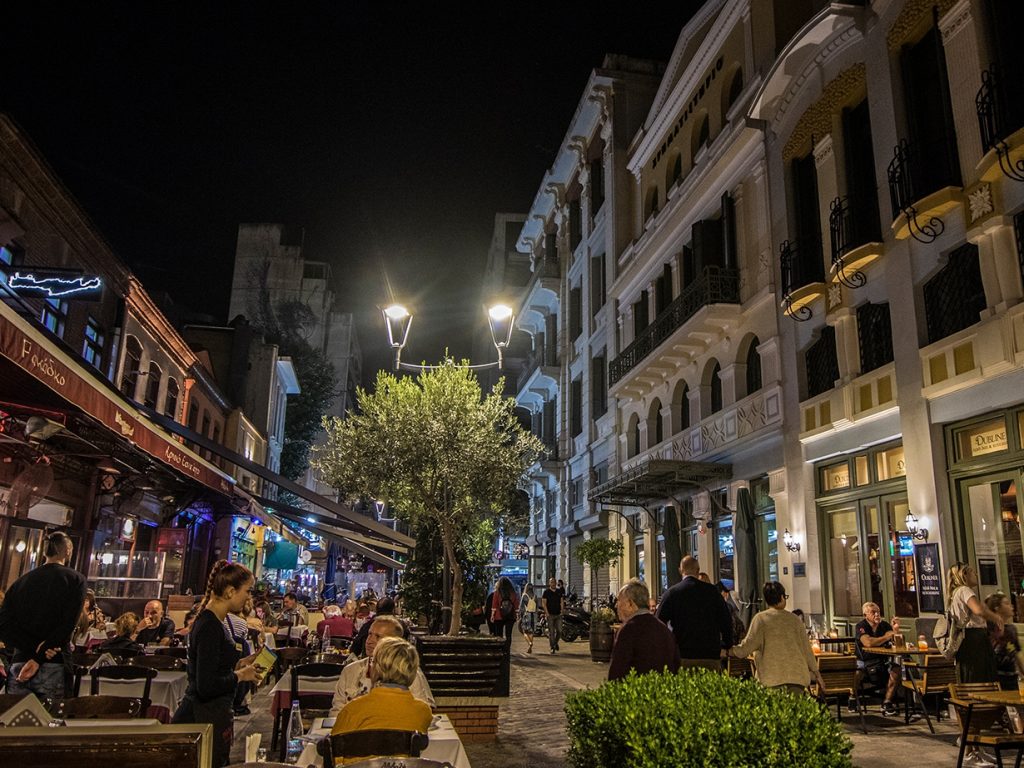
The tastes and names of the flavors in Thessaloniki cuisine, which have been under Ottoman rule for many years and are very similar to Turkish cuisine with their common culture, are almost the same. Since Thessaloniki is a coastal city, where many flavors such as cacık, baklava, moussaka, imam fainted, dolma and coffee are common, fish and seafood also have a very important place. You can also taste the famous Aegean appetizers in the city, where there are many cute fish restaurants where you can eat beautiful and delicious fish. Be sure to try the city-specific almond cookies, coconut dessert and ‘Barbushka dessert’. Other delicacies that you should not return without tasting are fried calamari, olive oil dishes, fresh herbs, fresh seafood, Greek shish kebab ‘Souvlaki’, Thessaloniki cheese dessert, Thessaloniki cookies, Easter bun ‘coureki’, custard and lemon pie ‘Mpougatsa’ and of course. Raki’s sister ‘Ouzo’. If you have planned a trip with a lower budget, you can tastethe “Greek doner” gyros, which are available in buffets and restaurants all over the city. I recommend you to try the pastry (bougatsa) cheesecake (tsoureki), as the dairy and cheese products of the Balkans are especially delicious. The old taverns are the place where the old times and the present times meet. You can usually find it near hotels, luxury bars, cinemas, theaters and cafes. You can taste the flavors of the very famous Thessaloniki cuisine in small and family-run venues. Head to Nea Diagonios for Soutzoukakia (spicy meatballs) and try 7 Thalasses for mithopilafo (mussels with rice). Don’t forget to eat fish at Mpakaliarakia tou Aristou. For dessert, the symbol of Thessaloniki, head to Trigona. At the Trigona Elenidis patisserie, you can taste magnificent handmade creamy baklavas. On Nikis Street, which is considered the Kordon of Thessaloniki, there are discos, bars, cafes and taverns that appeal to all tastes and budgets. During your journey, you can take a break and try the famous Greek frappe (iced coffee). You can also try the freshly served seafood from this region.
Thessaloniki shopping
Shopping in Thessaloniki is an integral part of a city trip. Instead of spending a day for shopping, you can shop while visiting the city on the one hand. You can buy exotic spices and taste fresh fruit at the glass-roofed Modiano and Kapani markets and the markets around Athonos Square. Tsimiski, the main shopping street of the city, takes its name from the former Byzantine emperor Ioannis Tzimiskis. There are luxury shops, cafes, offices and representative offices of various companies on the street. We can say that this is the most lively street of Thessaloniki. The street opens to Aristotle, one of the main squares of the city. If you want to shop, you can also visit the stores of famous brands on Egnatis Street. An important reminder, all shops are closed on Sundays. In addition to this area where there are souvenir shops, you can also explore the cute little shops along the promenade in and around the castle. In addition to handmade special ornaments, you can also choose food products such as ouzo and Greek coffee.
Where to stay in Thessaloniki RentRooms Hostel is the most popular hostel in Thessaloniki. Located in the city center, the hostel has a positive attitude towards its guests. Free breakfast, clean rooms and lockers in the rooms are advantages. Located in the area of the castle, Studios Arabas is a great hostel with city views.





